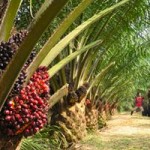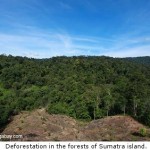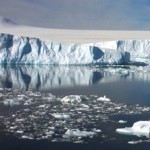
Edinburgh – Ocean sponges from shallower waters have already been shown to be valuable sources for new medicinal drugs to treat cancers and for antibiotics, and it is expected that deepwater sponges will be equally valuable, if not more so.
A ground-breaking new report, ‘Deep-sea Sponge Grounds: Reservoirs of Biodiversity’, which consolidates knowledge on the biology and ecology of deep-water sponge grounds, their value to society, and their associated policy frameworks, was launched today.
The report is aimed at boosting the protection and sustainable management of these long-overlooked diverse and ancient habitats that, being slow-growing and long-surviving, are particularly vulnerable to human activities such as bottom-trawl fishing. Today’s Canadian sponge reefs are up to 9,000 years old, with individual sponges reaching more than a century.
The report also draws attention to how little is currently known – a global map of sponges does not yet exist – and demonstrates the crucial need to develop fuller knowledge and understanding of these habitats together with raising awareness as to why sponge grounds are important and the threats they face.
To date, management and conservation of deep-water sponges is widely considered to be inadequate and uncoordinated, despite them being recognized internationally as vulnerable marine ecosystems and representing not only habitats for deep-sea fish, but also an important interest to the biotechnology industry as a reservoir for potentially life-saving drugs, such as Manolide, an active compound which has antileukemic properties and is from the Luffariella variabilis, a shallow water sponge from the South Pacific.
The report, unveiled today at the European Marine Biology Symposium at Heriot-Watt University in Edinburgh, has been compiled in collaboration with leading experts, as part of the United Nations Environment Programme – World Conservation Monitoring Centre’s (UNEP-WCMC) ‘Biodiversity Series’, and the UNEP Regional Seas Technical Report series.
The Symposium represents an excellent opportunity to bring deep-sea sponge science and conservation to the European regional stage and to contribute towards the escalating international efforts to understand and protect critical marine habitats. Its launch also coincides with the 2010 UN International Year of Biodiversity, of which UNEP and a number of the contributing institutions are partners.
Support for the production of the report was contributed by the World Wide Fund for Nature (WWF) and by the ‘Deep-sea Conservation for the UK’ Project funded by the Esmée Fairburn Foundation and the European Community’s Seventh Framework Programme under the HERMIONE Project.
“This report highlights the need to minimize the risk of damage to deep-sea sponge grounds through appropriate conservation and careful management, and presents further evidence of the need to improve understanding to ensure that future generations have the opportunity to benefit from these vulnerable deep-water habitats,” said Chris Elliot of WWF International.
UNEP-WCMC has a strong reputation for managing critical marine habitat data and for linking high-sea and deep-sea biodiversity data and information for management and policy decision-making. As an active partner in the European Community’s HERMIONE project and the Global Ocean Biodiversity Initiative (GOBI), UNEP-WCMC has recently launched a new initiative, the Global Marine Data Partnership, which aims to collaboratively improve the quality and quantity of data and information for coastal, open ocean and deep sea areas through a wide range of partnerships.
“Improved data on the habitat of deep sea sponge grounds that allows for the measurement of change over time will significantly help in policy planning, research and protective measures and is of increasing importance given the unknown impact of climate change and ocean acidification on the health and function of these fragile, and overlooked ‘Cinderellas’ of the sea,” said Nicola Barnard of UNEP-WCMC.
Appreciation of deep sea sponge grounds and consideration of them in conservation and management decision-making is only just beginning and the report launched today provides an excellent foundation upon which to build this work. Immediate needs include bringing the research community together to focus efforts on understanding these habitats, promoting the transfer of expertise and infrastructure from developed to less-developed nations, and building on existing policy mechanisms such as the Convention on Biological Diversity (CBD) which will help to implement protective measures at the soonest opportunity.
At the same time, the knowledge generated about deep-sea sponge grounds must lead to policy responses protecting these habitats from damage. These actions will ensure that our future generations will be able to benefit from these important and fragile, habitat forming architects of the deep sea.
Notes:
About Sponges
The sponges (Phylum: Porifera) form one of the most ancient animal groups on the planet, with a fossil record reaching back to the Cambrian, 580 million years ago. Sponges are multi-cellular and have simple structures with no true tissues or organs, yet despite this simplicity the group is highly diverse, comprising approximately 8,000 present-day species, an estimated 7,000 undescribed species and hundreds of fossil species.
Sponges form structurally complex habitats on the sea-bed supporting locally rich biodiversity. They have provided a range of goods and services for thousands of years and most recently – as of the 1970s – a growing significant biotechnological industry has developed and a number of drugs have now been discovered from sponges and taken through clinical trials.
There are existing policy frameworks which can be used to improve sponge protection and management, the most notable being the adoption by the UN General Assembly in December 2006 of Resolution 61/105 which calls upon States and regional fishery management organizations to ensure that vulnerable marine ecosystems do not suffer significant adverse environmental impacts from bottom fishing.
Deep-water sponges meet the criteria for the identification of Vulnerable Marine Ecosystems (VMEs) published by the UN Food and Agriculture Organisation (FAO) in 2009. The conservation of sponge grounds may also be achieved through the Convention of Biological Diversity’s 2012 marine protected area target and through their activities to identify Ecologically and Biologically Significant Areas (EBSAs) in the open oceans and deep seas.
About Esmée Fairbairn Foundation
The Esmée Fairbairn Foundation aims to improve the quality of life throughout the United Kingdom by funding the charitable activities of organizations that have the ideas and ability to achieve change for the better. They target work that might otherwise be considered difficult to fund. Their primary interests are in the cultural life of the UK, education and learning, the natural environment and enabling disadvantaged people to participate more fully in society.
About the HERMIONE (Hotspot Ecosystem Research and Man’s Impact on European Seas) Project
The HERMIONE is a Collaborative Project funded under the European Commission’s Framework 7 programme. HERMIONE is the successor to the highly successful HERMES Project, which finished in March 2009. It is designed to make a major advance in our knowledge of the functioning of deep-sea ecosystems and their contribution to the production of goods and services. This will be achieved through a highly inter-disciplinary approach (including biologists, ecologists, microbiologists, biogeochemists, sedimentologists, physical oceanographers, modelers and socio-economists) that will integrate biodiversity, specific adaptions and biological capacity in the context of a wide range of highly vulnerable deep-sea habitats.
About Convention on Biological Diversity (CDB)
The Convention on Biological Diversity (CDB) was signed by 150 government leaders at the 1992 Rio Earth Summit. The CBD is dedicated to promoting sustainable development and was inspired by the world community’s growing commitment to sustainable development. It represents a dramatic step forward in the conservation of biological diversity, the sustainable use of its components, and the fair and equitable sharing of benefits arising from the use of genetic resources. The Convention has now been ratified by 193 Parties, including all Small Island Developing States.
Click here to download full report: http://www.unep-wcmc.org/resources/publications/UNEP_WCMC_bio_series/32/Sponges_BS32-RS189.pdf
Source: UNEP Press Release dated August 23, 2010.














